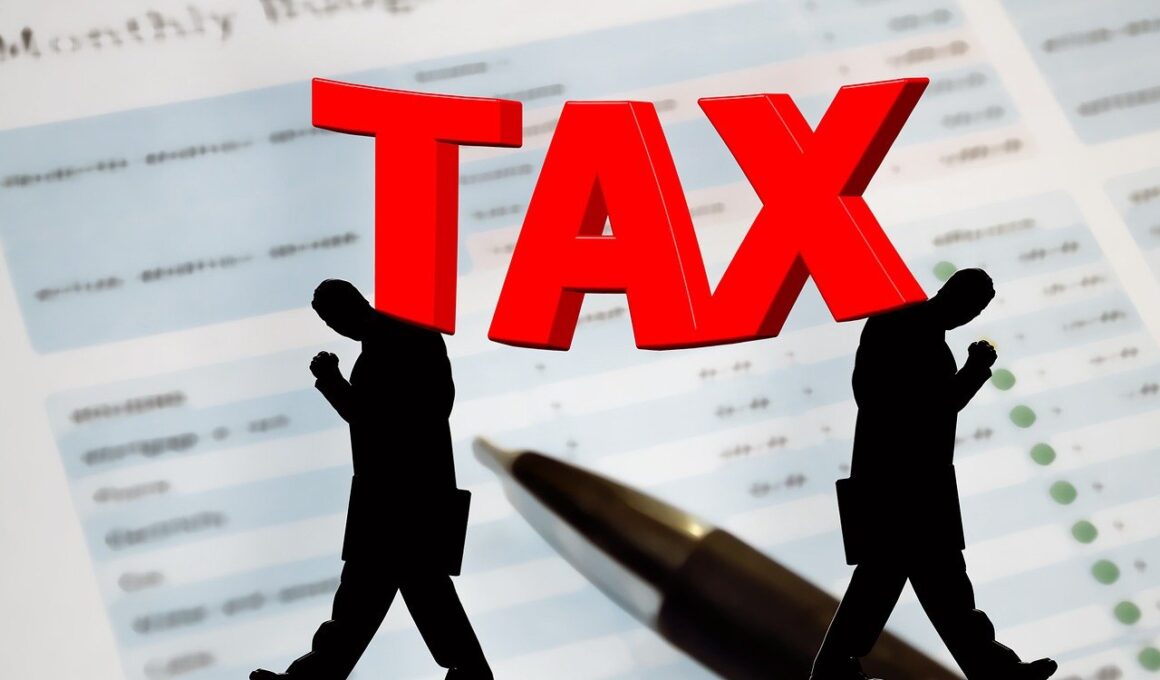How to Track Your Tax Refund Status Efficiently
Tracking your tax refund status is essential once you’ve filed your taxes. This process helps alleviate uncertainty and allows you to plan your finances effectively. Understanding where your refund is will give you insight into when you can expect to receive it. One of the most efficient ways to track your status is through the IRS’s online tool called “Where’s My Refund?” This tool is user-friendly, and all you need is your Social Security number, filing status, and the exact refund amount you are expecting. You can access this tool directly on the IRS website to stay updated. Additionally, consider creating an account on the IRS website to receive notifications directly via email or text about your refund status. This approach can save you time and provides peace of mind. As you embark on tracking your refund, it’s essential to keep your documents ready and ensure they are organized. Mistakes can delay your refund. Therefore, be diligent and follow the instructions the IRS provides carefully to expedite the process. Always verify your details before submitting your information to avoid issues.
Using Online Tools for Tracking
In addition to the IRS’s website, various mobile applications and services can assist in tracking your tax refund efficiently. Many taxpayers appreciate the convenience these apps provide. Some popular applications allow you to enter your tax refund information and receive real-time updates. These apps can send alerts through notifications, keeping you informed about your refund status without needing to log in frequently. This feature is particularly helpful for those with busy schedules who may not have time to check their statuses regularly. Ensure that any application you choose to use is legitimate and secure to protect your sensitive information. Look for apps with positive user ratings and reviews. Often, user feedback can guide you toward the most effective tools. When you find an app you like, familiarize yourself with its interface and features, so you can utilize them effectively. These tools can enhance your tax experience and help reduce stress about waiting for your refund while keeping you organized throughout the process.
Another effective method to stay updated about your tax refund involves reaching out to the IRS directly through their customer service. The IRS provides a toll-free number for taxpayers who prefer personalized assistance. When calling, be sure to have all necessary information ready, such as your Social Security number, filing status, and other identifying factors to expedite the call process. Although this option may involve wait times, speaking to a customer service representative can clarify any uncertainties regarding your refund status. Representatives can provide specific updates and are trained to help resolve issues that may delay your refund. Additionally, this personalized interaction can provide peace of mind, knowing that a qualified individual is addressing your concerns. It’s advantageous to call during off-peak hours, typically early in the morning or late in the week, to minimize wait times. Consider visiting local taxpayer assistance centers if you require face-to-face support. Obtaining tax assistance can ensure that you are on the right path regarding your tax filings and refund processes. Having someone guide you can make all the difference.
After filing your taxes, sometimes you may notice unexpected delays in receiving your refund. In such cases, understanding potential issues is essential. One common reason for delays includes errors on your tax return. Simple mistakes, such as incorrect Social Security numbers or mathematical errors, can lead to extended wait times for refunds. Therefore, double-checking your completed return before submission is vital. Ensure all calculations are correct and that all necessary forms are included when you file. Additionally, be aware that your refund may be delayed if you claim certain tax credits, such as the Earned Income Tax Credit or the Additional Child Tax Credit. The IRS often takes additional time to review claims that involve these credits to prevent fraud. If you’ve recently changed your bank accounts, it can also result in delays. It’s wise to use direct deposit for maximum efficiency when handling your refunds, but ensure that you are providing the correct banking information. Otherwise, you may face additional delays when attempting to locate your refund status.
Understanding IRS Timelines
Understanding the IRS’s timelines can also relieve stress regarding your refund expectation. Generally, the IRS states that most refunds are processed within 21 days when filed electronically and accurately. Keep in mind that paper returns may take longer due to processing times. Moreover, if you e-file and opt for a direct deposit, your refund is likely to arrive sooner. It’s also important to consider IRS holidays, weekends, and peak busy seasons. During filing season, the IRS experiences a high volume of returns, which may extend processing times. Keeping these timelines in mind can help adjust your expectations on when to expect your refund, allowing you to plan your finances have a better outlook while waiting. Moreover, timely filing and a complete understanding of the IRS’s guidelines about refund processing can streamline your experience. Visit the IRS’s official website frequently to stay informed about their current processing times. Knowing how the IRS operates will empower you throughout the tax season and beyond, ensuring that you remain calm amidst the wait for your tax refund.
To further improve your tax refund tracking experience, consider joining tax discussion forums or communities. These groups can provide insights and shared experiences from taxpayers in similar situations, offering advice and support. Not only can you learn from others’ stories, but you can also stay updated on any changes in IRS processing strategies and timelines. Many participants share valuable tips on how to resolve issues or streamline their refund processes. Platforms like Reddit or specialized financial forums allow open dialogue, and you can find various discussions surrounding tax refunds and experiences. Engaging with a community can also ease anxiety during the waiting period, as you are proactive in seeking knowledge. By sharing your own experiences, you may be able to assist others as well. Building a support network for tax-related matters can prove invaluable and help you feel connected with fellow taxpayers. Remember that you’re not alone in this journey, and countless taxpayers share your concerns about tracking their refunds efficiently and effectively.
Finally, maintaining proper records and staying organized is vital after you have received your tax refund. Once your refund arrives, review your financial situation and document where the funds have been allocated. Keeping track of expenditures allows for better financial planning in the future. It’s also beneficial to analyze your filing process for improvements. Reflect on whether your tax return preparation was smooth this year and note any areas that could be improved. Establish a system for saving your tax-related documents and correspondence for future reference or audits, as organized documentation is an asset. Create a folder or digital system to file essential documents, including W-2 forms, 1099 statements, and other relevant receipts. This practice will make the next tax season less stressful as you’ll be ready and organized. Eventually, evaluating your tax experience can lead to better strategies for future filings. By accumulating knowledge and improving your understanding each year, you can become more proficient in navigating the tax filing landscape, ultimately leading to less stress and a more rewarding financial experience.
Keeping an eye on your taxes is a continuous process that extends beyond just the filing season. Ongoing education about tax laws and updates can significantly improve your financial situation. Subscribe to IRS newsletters or follow reliable financial news websites to stay informed. Regularly updating your understanding of tax regulations allows you to strategically plan for your financial future, making it easier to file taxes next time. In conclusion, tracking your tax refund efficiently requires knowledge, patience, and the right tools. Utilize the resources available through the IRS, consider leveraging mobile apps, and engage with communities to share insights and gather information. Always stay organized and maintain proper documentation, and remain proactive concerning your tax knowledge. With these strategies in mind, you can streamline your tax refund tracking process and make it a smoother experience. Remember that every year offers a new opportunity to learn and refine your tax skills. Use this information effectively to ensure a well-prepared and stress-free tax season in the future. Your financial health will thank you for it!


